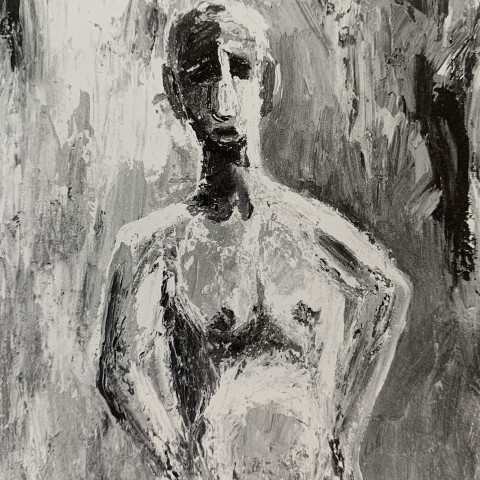A founder of the Bay Area Figurative School of painting, David Park was leader and teacher in the circle of artists, including Richard Diebenkorn and Elmer Bischoff, who both incorporated and rebelled against Abstract Expressionism as taught by Willem DeKooning and Mark Rothko.
Of Park, author Thomas Albright wrote: "His attempt to forge a new figurative art from the slags of Abstract Expressionism opened up challenges enough to occupy artists in the Bay Area and elsewhere for years to come" ("Art in San Francisco Bay Area" 62).
Some of his colleagues were shocked by Park's methods of excessive use of house paint with the theory that his forms would grow out of the medium. He also violated prevailing attitudes about the picture plane by putting his figures radically forward along the edge of the canvas and running a diagonal line such as a fence in opposition.
He was born in Boston and came West to live with an artist aunt, Edith Truesdell, because his failure to graduate from high school was embarrassing to his Unitarian minister father in his circle of well-bred friends. With his aunt's encouragement, Park attended the Otis Art Institute in Los Angeles from 1928 to 1929, but dropped out of school, and in the 1930s worked as a stonecutter for Robert Stackpool and for the Federal Arts Project.
By 1935, he was achieving recognition as an artist and had his first one-man show at the San Francisco Museum of Art. His painting at this time featured musicians and dancers in a hard, dry, distorted scale, and toward the end of the decade, became increasingly cubist in style.
He returned to Boston where he taught at a girls' school but moved back to California in 1941. He spent the war years working nights in a cable factory in Emoryville, and in 1944 began part-time teaching at the California School of Fine Arts, a job he subsequently resigned out of protest when his friend Hassel Smith was dropped from the faculty. By this time Park's work was smaller and more subdued with figures presented like pieces of jig-saw puzzles.
In 1955, he joined the art department at the University of California, and he and his wife Lydia bought a house in the Berkeley hills. During this time his painting was freed from the constrictions of his mosaic-like compositions, and gave the appearance of his figures being able to move and breathe. With restlessness and seeming lack of resolve, these figures expressed his horror at being constrained or fenced in.
He died in 1960 from cancer at the age of forty nine. The last year of his life, his frail health had kept him from doing the large-scale painting that he liked, and he changed to smaller works on paper with gouache, often focusing on the studio nude.
Source:
Thomas Albright, Art in the San Francisco Bay Area, 1945-1980

